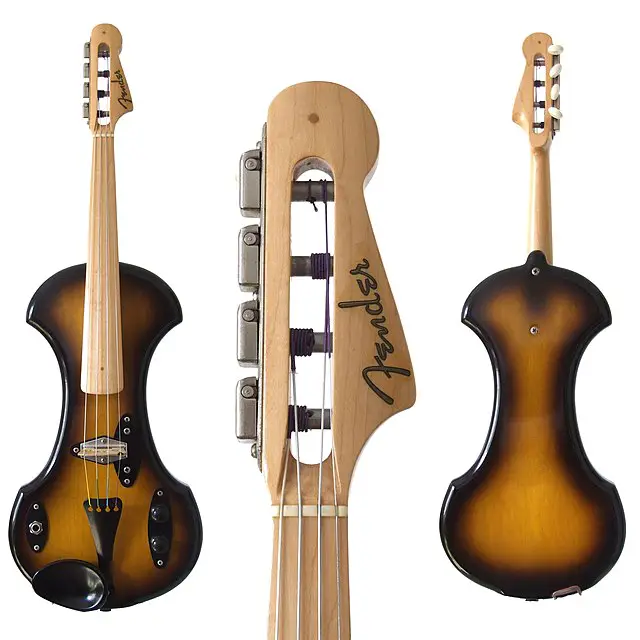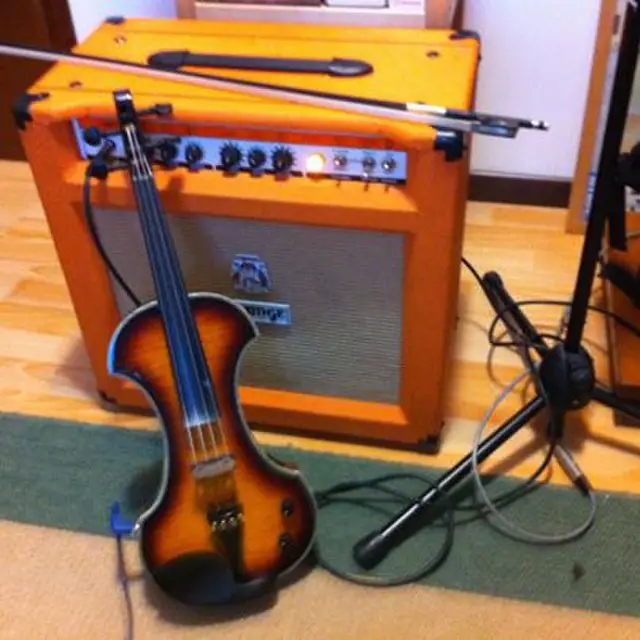The Electric Violin has many key differences compared to the traditional Violin. One of which is the way sound is produced – electric violins use a ’pickup’ that transmits sound to the amplifier. This is therefore an electric production of sound, whereas an acoustic violin relies on sound waves reverberating in the body of the instrument.
The violin requires very specific techniques to produce a good tone and electric violins are more forgiving for beginners. However, there’s a catch here. Many music teachers advise against starting with an electric violin. If you want to know why keep reading to the very end!
Summary
An electric violin is accessible to the beginner player due to being capable of producing a variety of fun sounds. They are also more forgiving than acoustic Violins and it’s possible to produce a good sound after only a few tries. However, it’s best to first learn the acoustic Violin to grasp the foundations of playing the Violin.
Table of Contents
How Is Playing the Electric Violin Different From Playing a Standard Violin?
Standard, or acoustic, violins are drastically different from electric violins. There are clear differences between these instruments from their design, the way sound is created, to the timber of musical notes.
To understand these differences, we should look at acoustic guitars and electric guitars. Most people treat them as totally different instruments.
They’re used in polar opposite contexts and their music is clearly distinguishable. On top of that, players use separate techniques to play each one.
This perception is missing while viewing standard and electric violins. More often than not, people expect electric violins to mimic acoustic violins in every way. This is quite idealistic, and in reality, hard to achieve.
A better approach is to embrace the natural discrepancies between standard and electric violins.

What Are the Differences in Technique Between an Electric Violin and a Standard Violin?
The main technical similarity between standard and electric violins is the way the bow moves on the strings. That’s it. Even the number of strings varies!
Here are some of the interesting ways that techniques vary between electric and standard violins:
Setting Up
An acoustic violin doesn’t require much setup. You might need to adjust the pegs, the strings, or the placement of the bridge
However, an electric violin requires setup beyond just the violin itself. The amplifier (which produces the sound) needs to be set up correctly and plugged into the violin. One can also use an effects pedal to produce more nuanced sounds.
Creating and Hearing Sound
Sound is created inside the empty wooden box of the acoustic violin once the bow passes on a string. The vibrations are amplified inside that closed space, then they get out from the f-holes in the body of the violin.
In the electric violin, these vibrations are picked right away by electronic devices. This signal is then sent to an amplifier for conditioning, then to a speaker or headphones where it becomes audible.
Thus, the sound quality and loudness are quite different in both instruments. The real warm sound of the violin, with the multitude of nuances, is only possible with a standard acoustic violin.

Practicing Quietly
One of the main advantages of electric violins is the quiet option. That was a brilliant invention that Yamaha came up with a few decades ago. This is possible because the user can plug in headphones to the Violin. Remember the electric violin doesn’t produce a loud sound by itself and relies on the use of an amplifier.
Reading a Dual Clef
Some electric violins work with more than the standard four strings. The extra strings mean moving on from the usual treble clef to an alto clef, pretty much like a viola.
This is an extra layer of difficulty that might be discouraging for many beginners. The good news is that this feature is only optional. Most electric violins come with four strings, just like the standard violins.
Playing With a Band
Bands are all about loudness, amplified music, and a host of special audio effects. Taking an acoustic violin and playing in that situation is possible. But it would need a different setup, like using a sensitive mic, placing it in a specific location, and not moving too far from it. Check out all of these available special effects:
Check out all of these available special effects for an Electric Violin amp:
An electric violin would be much more versatile and would blend harmoniously with the rest of the band.
The slightly tinny sound of the electric violin and all the effects that can be achieved with it make it a good fit with jazz, rock, and the more modern genres of music.
Playing With an Ensemble
A classical music ensemble typically has a traditional setup. Inserting an electric violin within that group would definitely stand out. And not in a flattering way.
Generally speaking, a violinist who intends to play classical music, should focus more on playing a standard violin.
An additional bonus is that an acoustic violin sounds a lot better with the notes and harmonics of classical music. This applies to the full range of high and low notes.
Playing Outdoors
The fine-quality wood that most acoustic violins are made from doesn’t take too well to the outdoors. Excessive heat, a freezing chill, a drizzle, or even high humidity could affect a wooden violin negatively.
That’s why most traditional players aren’t too enthusiastic about playing outdoors. Also, the loudness of an acoustic violin might be too low in some open area settings.
On the other hand, electric violins made from synthetic materials are often more robust. They wouldn’t complain too much about seasonal climatic variations.
On top of that, the sound can be amplified substantially. You can play easily in a stadium with everyone hearing you loud and clear.
If You Can Play the Electric Violin, Can You Also Play a Standard Violin?
The electric violins, especially the inexpensive ones, aren’t too sensitive to a player’s movements. Thus, the mistakes that would cause scratchy or off-key notes in a standard violin aren’t too obvious in an electric violin.
Similarly, a nuanced performance on an acoustic violin would be extremely difficult to replicate on an electric violin.
There’s a common mistake that most beginners do if they play extensively on electric violins. It’s caused by applying insufficient pressure on the strings and moving it too quickly or too slowly. This created a superficial sound in an acoustic violin that’s easily detectable.
The electric violin would auto-correct these issues, and a player wouldn’t notice that anything is missing or sounds odd.
Thus, in most cases, if players start practicing on an electric violin, chances are they wouldn’t learn the necessary skills to play an acoustic violin well.
Does the Electric Violin Make You Sound Better?
The electric violin is a tolerant instrument that takes missteps in stride. Whilst a beginner may sound scratchy and wobbly on an acoustic violin, on an electric violin a listener may not notice these differences.
As for the sound quality, that’s a different story. An acoustic violin renders a rich warm timbre to the music, and that’s not possible with an electric violin.
Are Electric Violins Auto-Tune?
Auto-tuning string instruments is one of the biggest dreams that guitarists, cellists, and violinists have. However, this electronic fantasy hasn’t come to fruition just yet.
Electric violins are generally t uned the same way acoustic ones are. They typically have the same four pegs and respond similarly to the user. If the user plays out of tune, the violin will sound out of tune.
Having said this, it’s worth mentioning that electric violins are more tolerant to variations in bow pressure, speed, and location. Thus, the notes usually come out sounding right most of the time. There’s a certain degree of auto-correction in most electric violins.
Is the Electric Violin Good for Beginners?
Beginners like electric violins as they’re easier to play. Plus, they find the silent feature invaluable while they practice their music.
The digital connectivity, easy recording, and playing along with other tracks are definitely an amazing perk that comes with electric violins. This is usually a shiny object that beginners can’t resist!
It’s also worth mentioning that a good electric violin costs a hefty amount of money. Otherwise, it would sound very different from a standard violin.
Should Beginners Start on an Electric Violin or a Normal Violin?
Music teachers aren’t too enthusiastic about that path though, and would often recommend starting with a standard acoustic violin.
That’s primarily to teach beginners the essential skills and nuances that are only possible with an acoustic violin. This actually makes sense, as a logical place to start is with the original instrument. That’s the only place where a player can feel the true sound of the violin.
Conclusion
The electric violin is quite accessible to beginners. It’s easier to master, and there are plenty of digital audio effects that come with it. Thus, it’s not a big surprise that it attracts young violinists.
Still, there are so many advantages to learning the acoustic violin first and then moving on to the bells and whistles of electric violins. By first mastering the acoustic violin, the player is likely to become a better and more versatile player.
